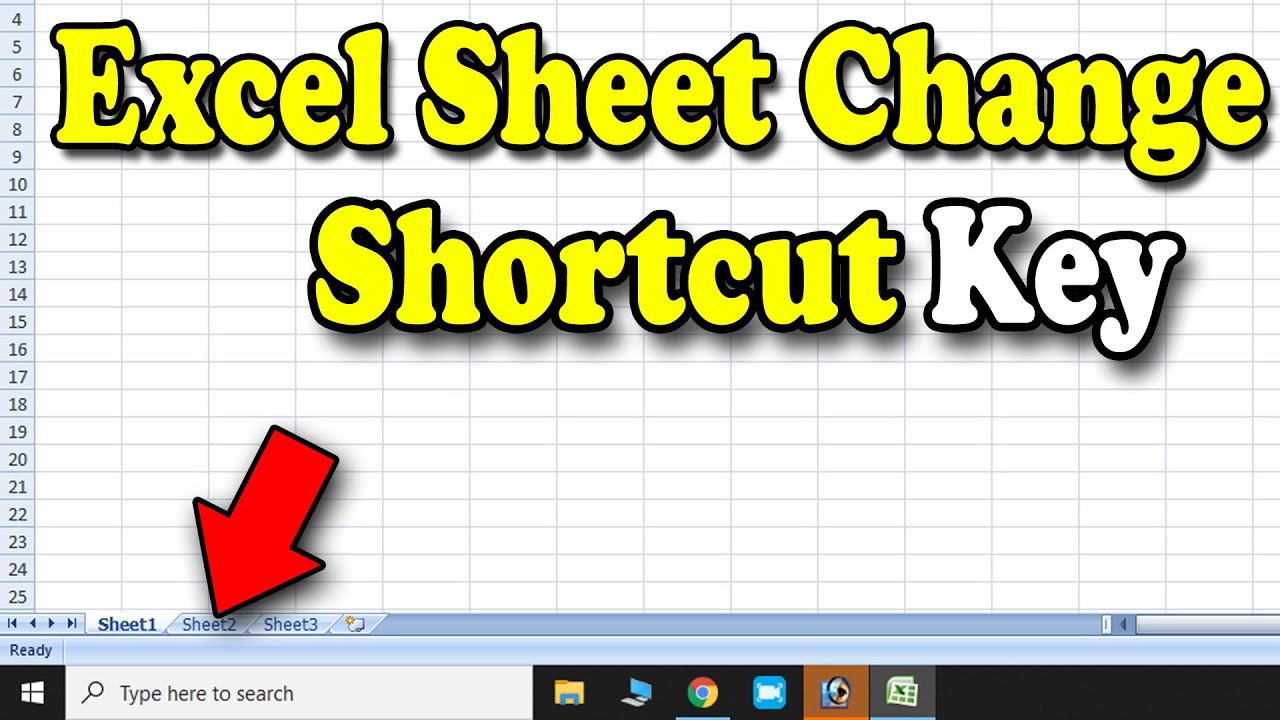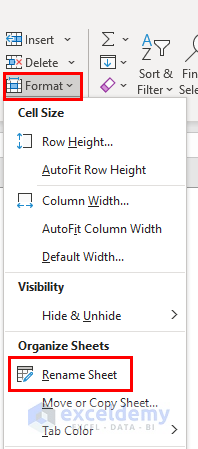5 Easy Ways to Rename Sheet Tabs in Excel

Whether you're a professional data analyst or someone who's just learning the ropes of Microsoft Excel, managing sheet tabs effectively can streamline your workflow. Renaming sheet tabs in Excel, though a seemingly simple task, can offer considerable benefits, including better organization, easier navigation, and more understandable spreadsheets. Here are five straightforward methods to rename your sheet tabs in Excel:
1. Double-Clicking the Sheet Tab

Perhaps the quickest way to rename a tab in Excel:
- Navigate to the tab you want to rename at the bottom of your workbook.
- Double-click the current tab name. This action will highlight the existing name, allowing you to edit it.
- Type in your new tab name. Keep it descriptive but concise to maintain clarity.
2. Using Right-Click Options

This method utilizes the context menu:
- Right-click on the tab you wish to rename.
- From the dropdown menu, select Rename.
- The tab name will become editable, allowing you to enter a new name.
3. Keyboard Shortcuts

Keyboard enthusiasts will appreciate these shortcuts:
- Press Alt + H to open the Home tab in the Ribbon.
- Then, press O followed by R. This sequence mimics the path: Home > Format > Rename Sheet.
- The tab name will be highlighted for editing.
⌨ Note: This method only works if your keyboard shortcuts are set to the default configuration.
4. Utilizing the Excel Ribbon

The Excel Ribbon provides an intuitive way to rename sheets:
- Click on the tab you want to rename.
- Go to the Home tab on the Ribbon.
- In the Cells group, select Format.
- Under Organize Sheets, click on Rename Sheet.
5. VBA Macro for Bulk Renaming

If you deal with workbooks that have numerous sheets, using a VBA macro can automate renaming:
- Press Alt + F11 to open the Visual Basic Editor.
- Go to Insert > Module.
- Paste the following code:
Public Sub RenameSheets() Dim ws As Worksheet For Each ws In ThisWorkbook.Worksheets ws.Name = “Sheet_” & ws.Index Next ws End Sub - Run the macro by selecting Run > Run Sub/UserForm or press F5 when the macro is highlighted.
This macro will rename all sheets in your workbook to “Sheet_1”, “Sheet_2”, etc.
⚠ Note: Be cautious with macros, as they can alter your workbook. Always back up your work before running macros.
The ability to rename sheet tabs in Excel is a fundamental skill that enhances the organization and usability of your spreadsheets. By following these methods, you can quickly and efficiently manage your Excel files, making them more accessible and understandable to others. Whether you're double-clicking for a quick change, utilizing context menus, using keyboard shortcuts, navigating the Ribbon, or employing a VBA macro for bulk operations, there's a method for every user's preference and needs. Remember, clarity in your sheet names can save you and others time in the long run, fostering a more productive environment.
Can I rename multiple sheet tabs at once?

+
Yes, using a VBA macro, you can rename multiple sheets at once. However, manual methods allow renaming one tab at a time.
Is there a limit to how many characters I can use for a sheet name?

+
Excel sheet names can be up to 31 characters long, including spaces and underscores.
What happens if I try to rename a sheet to an already existing name?

+
Excel will not allow you to use duplicate sheet names. You’ll need to choose a unique name.
Can I undo a sheet name change?

+
Excel does not have an “undo” feature specifically for renaming tabs. You’ll need to rename it back manually if you make a mistake.



